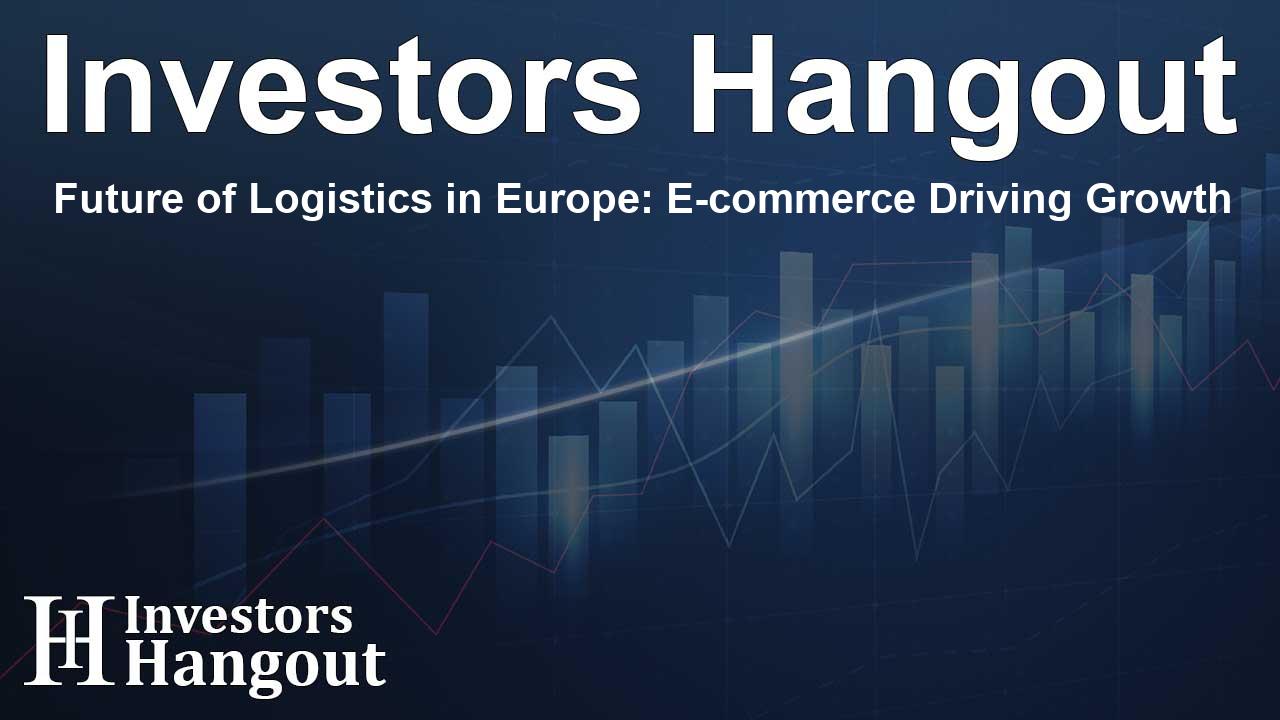Future of Logistics in Europe: E-commerce Driving Growth

Impactful Trends in the European Logistics Market
The logistics market in Europe is witnessing significant changes driven primarily by the booming e-commerce sector. Forecasts suggest that this market is set to grow by USD 48.4 billion from 2025 to 2029, maintaining a robust compound annual growth rate (CAGR) of 3.4%. This growth is being fueled by the increasing reliance on online shopping, which continues to reshape the logistics landscape.
Understanding Market Dynamics
As the European logistics sector evolves, it remains notably fragmented. Various vendors, including industry giants like AP Moller Maersk AS, FedEx Corp., and DSV AS, are forming partnerships across automotive and commercial sectors to navigate the competitive landscape effectively. These collaborations enable them to optimize their operations, enhance service delivery, and mitigate operational challenges.
Rising E-commerce Influence
In 2021, e-commerce in Europe generated an impressive €779 billion in sales, marking a 13% rise from the previous year. Projections indicate even more growth, with e-commerce sales expected to climb by 16% in the following year. With more than 90% of the European population using the internet, online shopping is becoming the norm, as 76% of internet users engaged in online purchases in 2022.
The Logistics Process Explained
Logistics encompasses the entire process of moving goods from production points in Asia to distribution centers across Europe. The scope includes shipping methods—be it air, sea, or rail—followed by trucking, receipt handling, inventory management, and final delivery to end customers. Each link in this chain plays a critical role, and efficiency in packaging is paramount to keeping logistics costs in check.
Key Drivers Behind Market Growth
The continuous growth of the e-commerce sector is the primary driver stimulating the expansion of the logistics market. Even with the challenges presented by rising operational costs and increasing competition, advancements in logistics technologies are paving the way for efficiency and cost-effectiveness. Innovative packaging solutions are emerging to address various inefficiencies, ultimately contributing to smoother operations.
Segment Breakdown of the Logistics Market
Within the European logistics market, there are several key segments worth noting. The major segments include third-party logistics (3PL) and fourth-party logistics (4PL). 3PL services are gaining traction as companies look to outsource their logistics operations to focus on core business functions while enhancing efficiency in their supply chains.
The Role of Third-party Logistics (3PL)
Third-party logistics providers are crucial for businesses seeking to streamline operations. 3PL can offer services such as inventory management, freight forwarding, and distribution—all tailored to meet specific client needs. This flexibility allows companies to adapt their logistics strategies to fluctuating market demands, enabling them to stay competitive while optimizing costs.
Future Insights and Opportunities
The European logistics market is set for dynamic growth in the coming years. The growth trajectory is expected to be bolstered by technological innovations that enhance tracking, data analytics, and overall visibility. Embracing these advancements will allow logistics providers to improve customer experiences and operational efficiencies amidst a rapidly evolving market.
Frequently Asked Questions
What factors contribute to the growth of the European logistics market?
The growth is primarily driven by the e-commerce boom, technological advancements in logistics, and increased demand for efficient supply chain operations.
How significant is the projected growth rate for the logistics market?
The logistics market in Europe is expected to grow by USD 48.4 billion from 2025 to 2029, with a CAGR of 3.4%.
What role do 3PLs play in the logistics sector?
3PL providers enable companies to outsource logistics functions, thus allowing them to focus on core activities while benefiting from specialized expertise and efficiencies in logistics.
How has e-commerce influenced logistics operations?
With increased online shopping, e-commerce drives a higher volume of goods to be transported, leading to innovations in logistics to accommodate growing customer expectations and rapid delivery times.
What are the key challenges faced by the logistics market in Europe?
Challenges include rising operational costs, intense competition, and the need for continuous adaptation to changing regulations and consumer behaviors.
About The Author
Contact Olivia Taylor privately here. Or send an email with ATTN: Olivia Taylor as the subject to contact@investorshangout.com.
About Investors Hangout
Investors Hangout is a leading online stock forum for financial discussion and learning, offering a wide range of free tools and resources. It draws in traders of all levels, who exchange market knowledge, investigate trading tactics, and keep an eye on industry developments in real time. Featuring financial articles, stock message boards, quotes, charts, company profiles, and live news updates. Through cooperative learning and a wealth of informational resources, it helps users from novices creating their first portfolios to experts honing their techniques. Join Investors Hangout today: https://investorshangout.com/
The content of this article is based on factual, publicly available information and does not represent legal, financial, or investment advice. Investors Hangout does not offer financial advice, and the author is not a licensed financial advisor. Consult a qualified advisor before making any financial or investment decisions based on this article. This article should not be considered advice to purchase, sell, or hold any securities or other investments. If any of the material provided here is inaccurate, please contact us for corrections.
